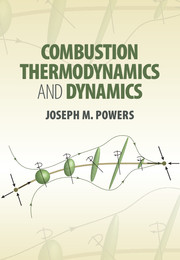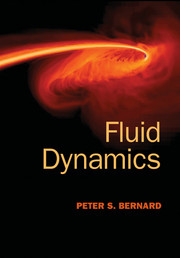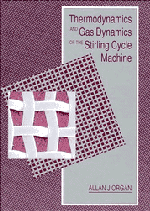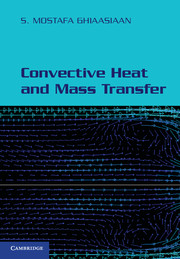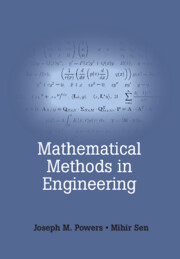Combustion Thermodynamics and Dynamics
Combustion Thermodynamics and Dynamics builds on a foundation of thermal science, chemistry, and applied mathematics that will be familiar to most undergraduate aerospace, mechanical, and chemical engineers to give a first-year graduate-level exposition of the thermodynamics, physical chemistry, and dynamics of advection-reaction-diffusion. Special effort is made to link notions of time-independent classical thermodynamics with time-dependent reactive fluid dynamics. In particular, concepts of classical thermochemical equilibrium and stability are discussed in the context of modern nonlinear dynamical systems theory. The first half focuses on time-dependent spatially homogeneous reaction, while the second half considers effects of spatially inhomogeneous advection and diffusion on the reaction dynamics. Attention is focused on systems with realistic detailed chemical kinetics as well as simplified kinetics. Many mathematical details are presented, and several quantitative examples are given. Topics include foundations of thermochemistry, reduced kinetics, reactive Navier–Stokes equations, reaction-diffusion systems, laminar flame, oscillatory combustion, and detonation.
- Presents a detailed theoretical analysis with many intermediate steps, equipping students to solve real combustion problems
- The language and methods of both thermodynamics and nonlinear dynamical systems are fully discussed and connected
- The most authoritative and comprehensive textbook on nonlinear dynamics of combustion to date
Product details
No date availableAdobe eBook Reader
9781316670972
0 pages
0kg
146 b/w illus. 17 tables
Table of Contents
- Preface
- Part I. Reactive Systems:
- 1. Introduction to chemical kinetics
- 2. Gas mixtures
- 3. Mathematical foundations of thermodynamics
- 4. Thermochemistry of a single reaction
- 5. Thermochemistry of multiple reactions
- 6. Nonlinear dynamics of reduced kinetics
- Part II. Advective-Reactive-Diffusive Systems:
- 7. Reactive Navier–Stokes equations
- 8. Simple linear combustion
- 9. Idealized solid combustion
- 10. Premixed laminar flame
- 11. Oscillatory combustion
- 12. Detonation.

